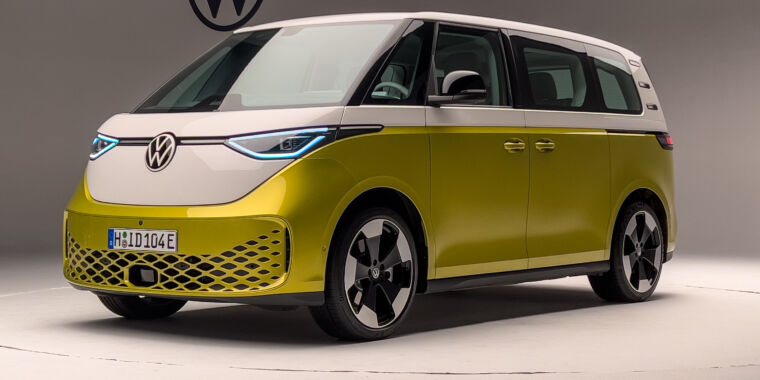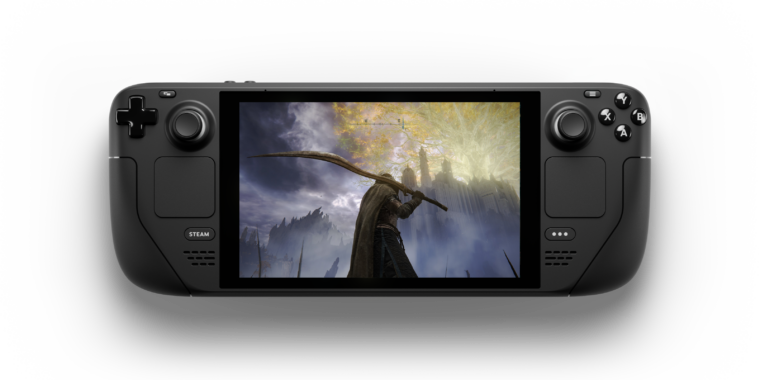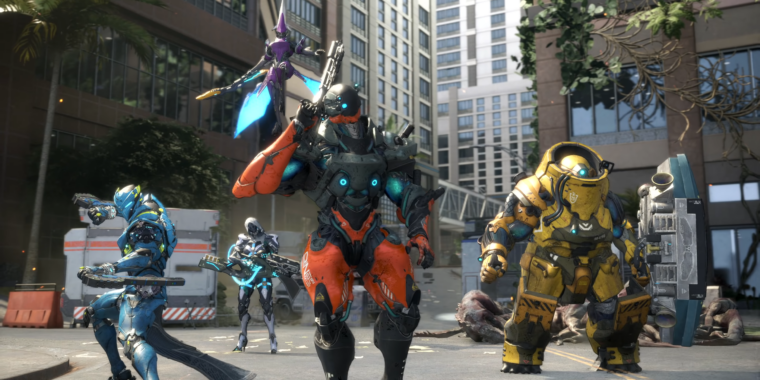
Jonathan Gitlin
Nostalgia is a powerful emotion, particularly when you’re selling things. That’s why automakers regularly dip into their back catalogs to dust off a beloved nameplate or silhouette and marry it to modern underpinnings.
And you can’t get much more modern than a battery-electric powertrain, as in the case of Volkswagen’s new ID. Buzz. (Yes, the name has a period in it.) The company that gave us the new Beetle based on the much-loved old Beetle has now drawn inspiration from its iconic T1 Microbus. Although we saw the initial ID. Buzz concept back in 2017, the vehicle is back as a production model. It goes on sale in Europe next year and in the US in 2024.

Jonathan Gitlin
Depending how you look at it, the ID. Buzz has been two decades in the making. Back in 2001, Volkswagen designed a new Microbus, which looked cool but never progressed past the concept stage. Ten years later, VW tried again with Bulli. Although Bulli looked less gainly than the Microbus, it was perhaps a more realistic representation of a production van, with a bulging nose to accommodate an engine bay and front impact protection.
The next VW van concept only took a half-decade this time. 2016 was the year of BUDD-e, which kept Bulli’s two-box shape but ditched the internal combustion engine. Instead, VW would develop a new flexible architecture for electric vehicles in the wake of dieselgate.
Then at 2017’s New York auto show, we saw the concept ID. Buzz, a charming day-glo creation truer to the 2001 Microbus—and the Microbuses from the ’50s, ’60s, and ’70s—than either Bulli or BUDD-e. The reaction, even from people who usually couldn’t care less about cars, was remarkable, and VW quickly greenlighted the ID. Buzz for production.

Jonathan Gitlin
Over the last year or so, Internet chatter about the ID. Buzz has at times been downhearted. People who saw photos of camouflaged Buzz prototypes worried that the concept’s charm had been watered down to the point where it would just be another boring minivan. After seeing the vehicle in person, I can say that their fears are unfounded. For one thing, minivans aren’t boring. And even if they are, this one isn’t.
A few of the 2017 concept’s details are missing—there’s no bleached wooden floor, and there’s no levitating gnome on the dashboard. The sideview cameras have been replaced by real mirrors. But there’s not really any more of a nose to the shape than the 2017 design study, and the vehicle still looks splendid in two-tone, which is now a more showroom-friendly gold and white rather than gray and fluorescent yellow. Between the axles, the ID. Buzz packs an 82 kWh battery pack with a 150 kW electric motor driving the rear axle.
Despite the missing gnome, there’s still plenty of whimsy if you look for it. I counted a number of ID. Buzz silhouettes, embossed into padded trim or molded into a seat base or even on the rear screen’s frit. Even the plastic bits that cover up screw holes have little winking smiley faces on them. And the pedals have the same “pause” and “play” symbols on them that we’ve seen on previous ID concepts and first editions.
-
White is not the most practical color for this interior.
Jonathan Gitlin -
Cargo goes here.
Jonathan Gitlin -
An Easter egg.
Jonathan Gitlin
The van is plenty practical, too, with USB-C ports all over the place and lots of storage spaces. The middle row of seats is not removable, but it does fold down, and VW will have a cargo shelf accessory that goes in the back. That means you’ll have a level floor (at the height of the folded-down middle seats) with storage space below.
Technically, the vehicle you see in the photos and video is not really a minivan, either. When Europeans get their first ID. Buzzes next year, they will be getting this shorter-wheelbase variant, which only has two rows of seats in passenger specification. Europe also gets an ID. Buzz Cargo that only has seats up front.
Neither the short-wheelbase passenger van nor the cargo van is destined for North America, however. Next year, VW will unveil a longer-wheelbase ID. Buzz, which will feature three rows of seats. And this is the variant we’ll see in 2024. That’s too far off for VW to be able to tell us how much the vehicle will cost or get into specifications, including how far it can go on a single charge. We do expect there might be an all-wheel-drive option, and VW might make ID. Buzzes with different-capacity battery packs. But we have no concrete information at this date.








